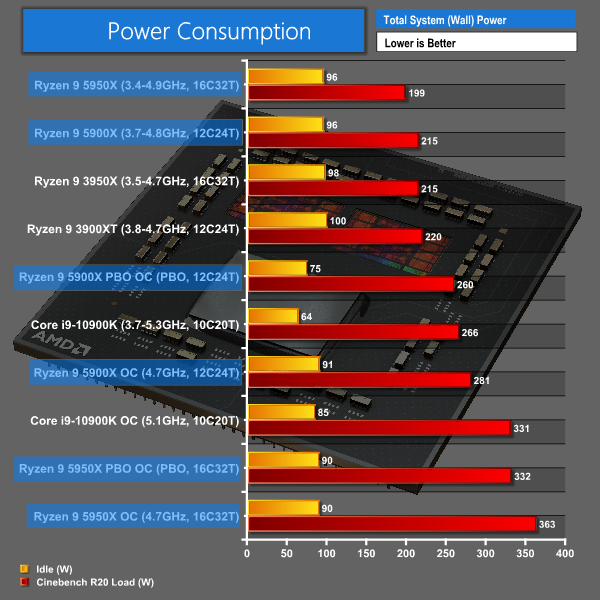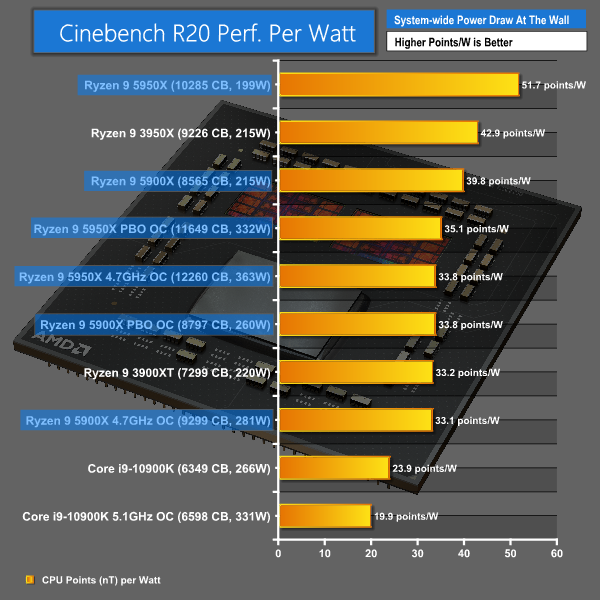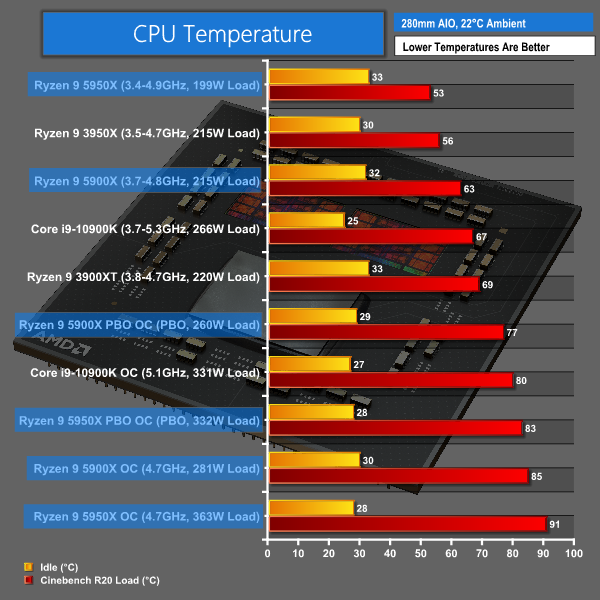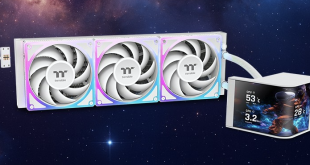We leave the system to idle on the Windows 10 desktop before taking a power draw reading. For CPU load results, we read the power draw while producing five minutes' worth of loading in the Cinebench R20 nT rendering test.
The power consumption of our entire test system (at the wall) is shown in the chart. The same test parameters are used for temperature readings.
Power Consumption
Power draw readings are accurate to around +/-5W under heavy load due to instantaneous fluctuations in the value. We use a Titanium-rated Seasonic 1000W Prime PSU.
Power consumption still proves to be an area where AMD does very well with Zen 3.
The 5900X draws more power than the 5950X because the 12-core chip runs at higher clock speeds and therefore uses more of its 142W PPT allocation. Still, the power draw numbers at stock are impressively low and make the processor easy to handle from a motherboard VRM, PSU, and cooling perspective. That’s especially true when looking at the Core i9-10900K competitor that runs at around 50W higher load power in its turbo duration unlimited state.
Overclocking the 5900X via PBO or a manual 4.7GHz frequency again sees substantial increases in power draw numbers. This is again backed up with improvements to performance and it therefore presents itself as a good upgrade for enthusiasts who have higher spec partnering hardware that is capable of handling overclocks.
Performance per Watt
The 5900X does extremely well to get to a power efficiency number of anywhere near the Zen 2 3950X in light of the new chip’s core count deficit. The improvement versus the 12-core 3900XT is a sizable one for the stock 5900X. Zen 2 was excellent in terms of power efficiency and Zen 3 extends AMD’s lead over Intel’s 14nm 10900K in convincing fashion.
Temperatures
Temperature recordings were taken using the Fractal Celsius+ S28 Prisma 280mm AIO CPU cooler at full fan and pump speed. Ambient temperatures were around 22°C.
The 5900X runs hotter than the 5950X at stock thanks to its higher operating clock speed and power draw. We do, however, continue to see the operating temperature decrease for our Zen 3 samples versus the comparable Zen 2 chips.
This time, the PBO and 4.7GHz manual overclock numbers were very comfortable on a 280mm AIO cooler and were also handled with relative ease using a Noctua NH-D15S chromax.black air cooler.
From a temperature perspective, it looks like AMD’s Zen 3 will not push you to extremes. This is a very good point, especially with Intel upping their thermal game with the 10900K’s redesigned heatspreader. We’d be happy to use big AIO coolers with the 5900X and 5950X, but our testing also proved that air coolers will do a very good job
 KitGuru KitGuru.net – Tech News | Hardware News | Hardware Reviews | IOS | Mobile | Gaming | Graphics Cards
KitGuru KitGuru.net – Tech News | Hardware News | Hardware Reviews | IOS | Mobile | Gaming | Graphics Cards





